Budgerigars, commonly known as budgies, are small and colorful parrots native to Australia. They make popular pets due to their charming personalities and ability to mimic human speech.
Like other birds, budgies exhibit hormonal behavior, especially during certain stages of their reproductive cycle.
Understanding female budgie hormonal behavior is crucial for bird owners to ensure the well-being and health of their feathered companions.
In this article, we delve into the hormonal changes that occur in female budgies and explore the behaviors associated with their reproductive cycle.
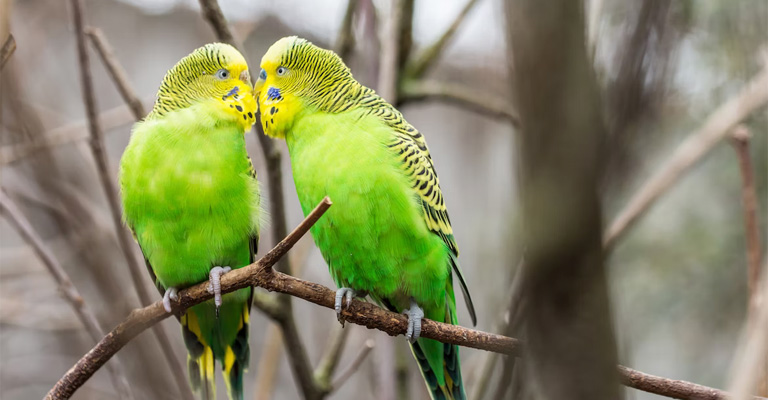
Female Budgie Hormonal Behavior
Female budgies, like many other bird species, undergo hormonal changes throughout their reproductive cycle.
Hormones play a crucial role in regulating various physiological processes in all living organisms, including birds. In female budgies, hormones such as estrogen and progesterone dictate reproductive cycles and influence behaviors associated with mating, nesting, and raising chicks.
Hormonal Fluctuations and Breeding Season
Female budgies’ hormonal behavior is closely linked to seasonal changes, with the breeding season typically occurring during the warmer months.
As days grow longer and the environment becomes more conducive to breeding, female budgies experience an increase in estrogen levels, triggering the onset of reproductive behaviors.
Courtship Displays and Aggression
During the breeding season, female budgies may display courtship behaviors, such as regurgitating food to a potential mate, fluffing their feathers, and engaging in head-bobbing movements.
At the same time, they may become more territorial and aggressive, especially if they feel threatened or if another female budgie encroaches on their nesting area.
Nesting Instincts and Egg-Laying
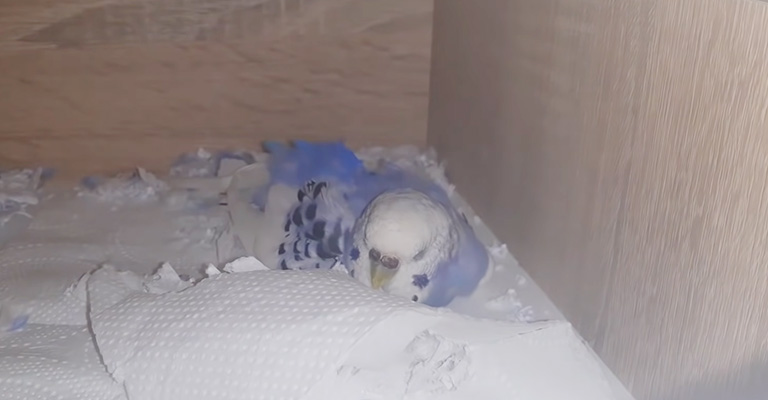
As their hormonal levels surge, female budgies develop a strong nesting instinct. They may actively seek out suitable nesting sites, often showing preferences for enclosed and dark spaces. Owners may notice them exploring various spots in the cage or aviary, looking for the perfect spot to lay their eggs.
Once a nesting site is selected, female budgies will lay a series of eggs, usually one egg every other day until a complete clutch is formed. The typical clutch size is between 4 to 8 eggs, but this can vary depending on the individual bird and her health.
Protective Motherly Behavior
After the clutch is complete, the female budgie’s hormonal focus shifts to incubating the eggs and protecting her nest. She will spend most of her time sitting on the eggs, keeping them warm until they hatch.
During this period, female budgies may exhibit heightened aggression towards other birds, as they fiercely defend their nest and potential offspring.
What Causes Hormonal Behavior In Birds?
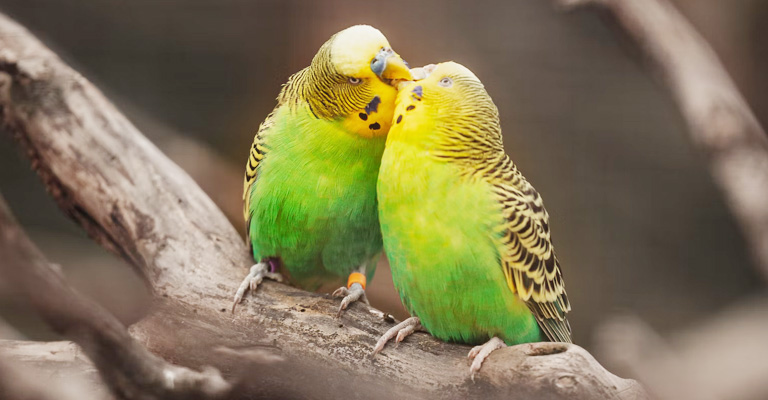
Hormonal behavior in birds, including budgies, is primarily triggered by the reproductive hormones that fluctuate during certain periods, typically associated with breeding or nesting.
The main hormone involved in regulating reproductive behavior in birds is the gonadotropin-releasing hormone (GnRH), which is produced by the hypothalamus and acts on the pituitary gland.
The following factors can contribute to the development of hormonal behavior in birds:
Photoperiod (Day Length)
The length of daylight plays a significant role in triggering hormonal behavior in birds. As the days lengthen, particularly during spring and summer, it stimulates the release of GnRH, which, in turn, stimulates the production of other reproductive hormones such as luteinizing hormone (LH) and follicle-stimulating hormone (FSH).
Nesting Stimuli
Certain environmental cues can trigger the onset of hormonal behavior in birds. These cues may include the availability of nesting sites, the presence of nesting materials, and the social interactions with potential mates.
Diet and Nutrition
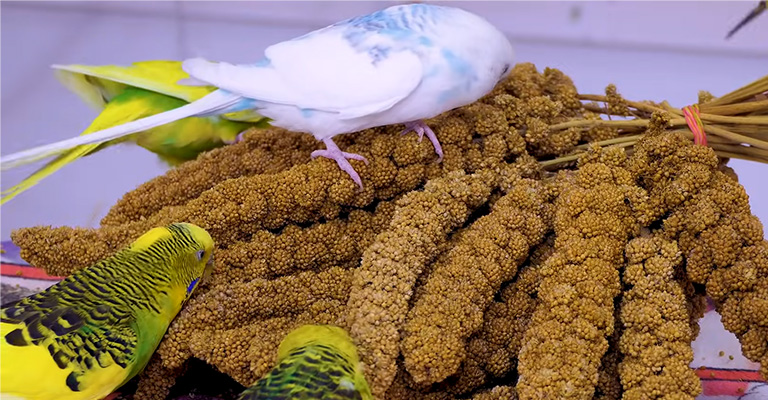
The diet and nutrition of a bird can influence its hormonal behavior. A diet that is high in fat or protein content can stimulate breeding behavior, as it mimics the nutrient-rich conditions associated with breeding and raising offspring.
On the other hand, a balanced and varied diet can help regulate hormones and prevent excessive hormonal behavior.
Social Interactions
Social interactions, especially between potential mates, can influence the hormonal behavior of birds. The presence of compatible mate or courtship behaviors, such as singing, displaying, and mutual preening, can stimulate the release of reproductive hormones and trigger breeding behavior.
Genetics
Genetic factors may also play a role in the propensity for hormonal behavior in birds. Some individuals may be more genetically predisposed to exhibit intense hormonal behavior compared to others.
It’s important to note that hormonal behavior is a natural part of a bird’s reproductive cycle and may be necessary for successful breeding. However, in captive birds, excessive or prolonged hormonal behavior can lead to health issues, stress, and behavioral problems.
How To Tell If Your Bird Is Hormonal?
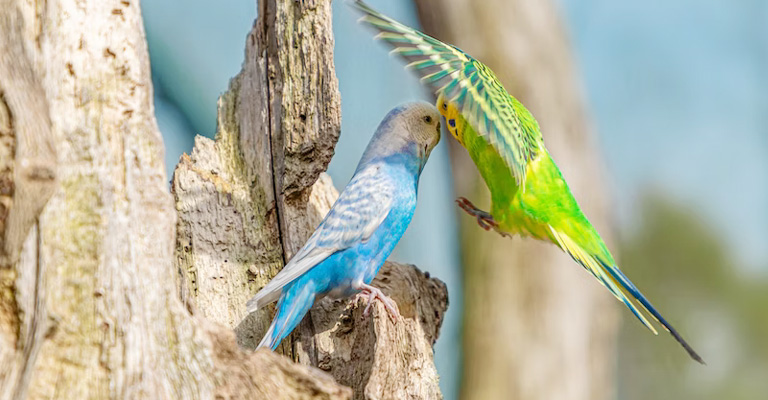
There are several signs that can indicate if your bird is exhibiting hormonal behavior. While these signs may vary among individuals, here are some common indicators to look out for:
Increased Vocalization
Hormonal birds may become more vocal, particularly during the morning or evening. They may vocalize with more intensity or frequency, including singing, chirping, or calling.
Aggressive Behavior
Hormonal birds may exhibit increased territorial behavior and aggression, especially towards perceived threats or intrusions into their space. This can include lunging, biting, or displaying aggressive postures.
Nesting Behavior
Hormonal birds may show nesting behavior, even in the absence of a suitable nest or mate. They may shred paper or other materials, build nests in unlikely places, or exhibit increased interest in potential nesting spots.
Increased Physical Activity
Hormonal birds may engage in more energetic or frenetic behavior, such as flapping their wings vigorously, running around their enclosure, or engaging in repetitive motions.
Regurgitation
Regurgitation is a natural behavior for birds, but hormonal birds may engage in excessive regurgitation, often directed towards objects or people they perceive as potential mates.
Displaying Courtship Behaviors
Hormonal birds may exhibit courtship behaviors, such as head-bobbing, tail-lifting, wing-quivering, or offering food to objects or individuals they perceive as potential mates.
Increased Territoriality
Hormonal birds may become more possessive of their cage or designated space. They may display defensive behaviors when approached or may become protective of objects or areas they consider as their territory.
It’s important to note that some of these behaviors can also be displayed by birds for other reasons, such as boredom, illness, or stress. Therefore, it’s essential to consider the context and observe your bird’s behavior over time to determine if it is indeed related to hormonal changes.
Does a Female Budgie’s Posture Indicate Her Hormonal Behavior?
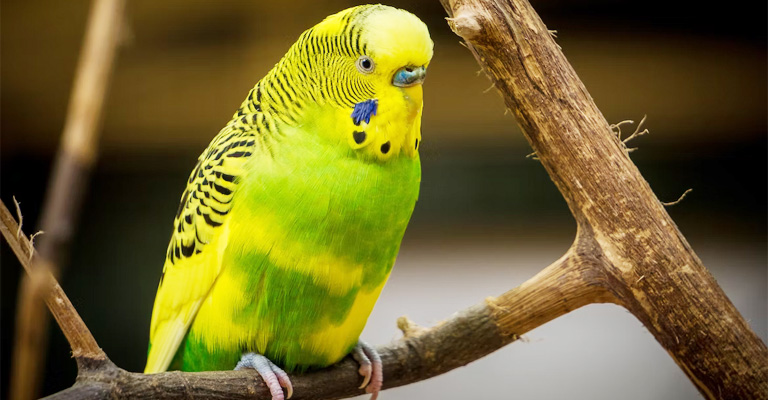
Yes, the posture of a female budgie (also known as a parakeet) can indicate her hormonal behavior. Budgies, like many other birds, undergo hormonal changes during certain periods, such as breeding season or when they are ready to lay eggs.
These hormonal changes can affect their behavior and physical appearance. During the breeding season or when a female budgie is sexually receptive, she may exhibit certain postures that indicate her hormonal behavior. Some common postures include:
Flattened or Lowered Body Posture
When a female budgie flattens her body and lowers it close to the perch or nest box, it can be a sign of readiness for breeding. This posture allows the male budgie to easily mount and mate with her.
Tail Lifting
A female budgie may lift her tail slightly when she is ready to mate. This posture helps facilitate copulation with the male.
Crouching or Squatting
When a female budgie crouches or squats low on the perch or inside the nest box, it is a submissive posture indicating her receptivity to the male.
These postures are often accompanied by other behaviors such as chirping, regurgitation of food, and increased interest in nesting materials. It’s important to note that hormonal behavior and postures can vary among individual budgies, and not all females will exhibit the same behaviors.
If you observe these postures in your female budgie, it may be an indication that she is in a hormonal state and potentially ready to breed.
Providing a suitable nesting environment, including a nest box with suitable bedding, can help satisfy her nesting instincts. However, if you do not intend to breed budgies, it’s advisable to prevent breeding conditions to avoid potential complications or health issues for your bird.
What to Do to Discourage Hormonal Behavior?
If you want to discourage hormonal behavior in your budgie, there are several steps you can take:
Adjust the Lighting
Budgies are sensitive to light, and increasing the amount of darkness in their environment can help suppress hormonal behavior. Ensure that your budgie gets 10-12 hours of uninterrupted darkness during the night by covering their cage or moving them to a quiet, dark room.
Limit the Exposure to Nesting Materials
Remove or reduce the availability of materials that are commonly associated with nesting behavior, such as paper, cloth, or other soft materials. Nesting materials can stimulate hormonal behavior, so it’s best to avoid providing them.
Modify the Diet
Diet plays a significant role in regulating hormones in budgies. Avoid feeding a diet that is high in fat or protein, as these can trigger breeding behavior.
Provide a well-balanced diet consisting of a variety of fresh fruits, vegetables, high-quality pellets, and a moderate amount of seeds. Consult with an avian veterinarian or an avian nutritionist for specific dietary recommendations for your budgie.
Minimize Petting and Physical Stimulation
Excessive petting, especially around the back and vent area, can stimulate hormonal behavior in budgies. Limit handling to short periods and avoid touching areas that may trigger hormonal responses.
Avoid Encouraging Mating Behavior
Certain actions, such as providing a mirror or allowing a budgie to engage in excessive courtship behaviors with a reflection, can encourage hormonal behavior. Remove mirrors or any objects that may stimulate mating behavior.
Maintain a Consistent Environment
Budgies thrive on routine, so maintaining a consistent daily routine can help minimize hormonal behavior. Ensure they have a stable environment with consistent lighting, feeding times, and social interactions.
Consider Companionship
Budgies are social birds, and having a same-sex companion can help divert their focus from hormonal behavior. However, keep in mind that introducing a new bird requires careful consideration and proper quarantine procedures to ensure compatibility and avoid the spread of diseases.
FAQs
The breeding season for female budgies usually occurs during the warmer months, typically from spring to early summer. However, the duration can vary depending on environmental factors and individual birds. On average, the breeding season may last for a few months.
If your female budgie displays aggression during the breeding season, it’s important to approach the situation with patience and understanding. Avoid provoking or challenging her, as this may escalate her aggressive behavior. Providing her with ample space, stimulation, and environmental enrichment can help redirect her focus and reduce aggression.
The typical clutch size for a female budgie ranges from 4 to 8 eggs. However, the number of eggs can vary depending on the individual bird, her age, and overall health.
Some budgies may lay fewer eggs, while others may lay more. It’s essential to provide a suitable nesting site and monitor the health of the female budgie during the egg-laying process.
No, it is not necessary for a female budgie to have a mate in order to lay eggs. Female budgies are capable of laying unfertilized eggs, which means they can lay eggs without the presence of a male budgie. These eggs will not develop into chicks.
However, if you do not intend to breed budgies, it is generally recommended to prevent egg-laying by minimizing hormonal stimulation and removing nesting materials from the cage or aviary. This helps to avoid potential health complications related to excessive egg-laying.
Bottom Line
Female budgie hormonal behavior is an intricate and fascinating aspect of their natural cycles. As owners, understanding these hormonal fluctuations is essential to providing the best care for our avian companions.
While hormonal aggression during the breeding season can present challenges, with proper management and attention to their needs, female budgies can thrive and continue to be cherished companions for years to come.